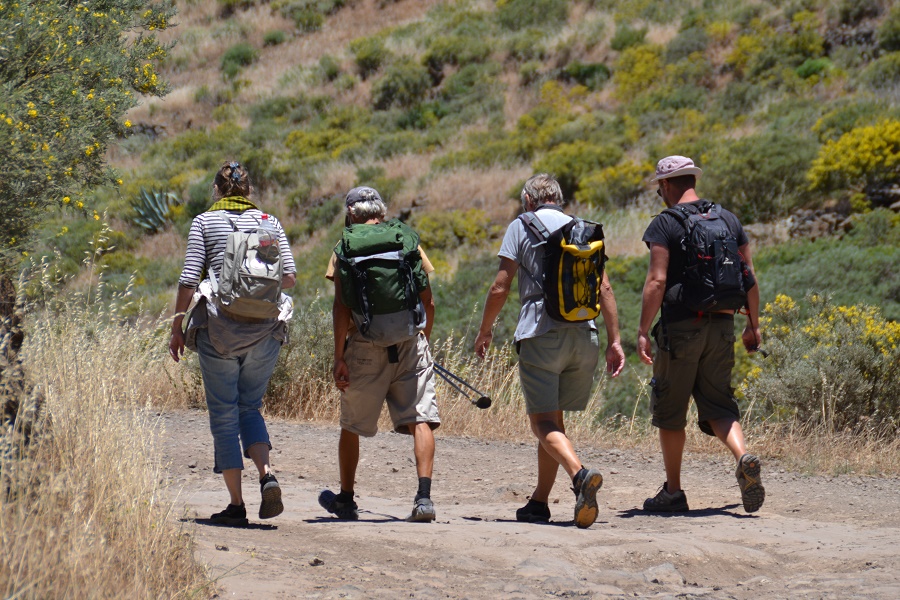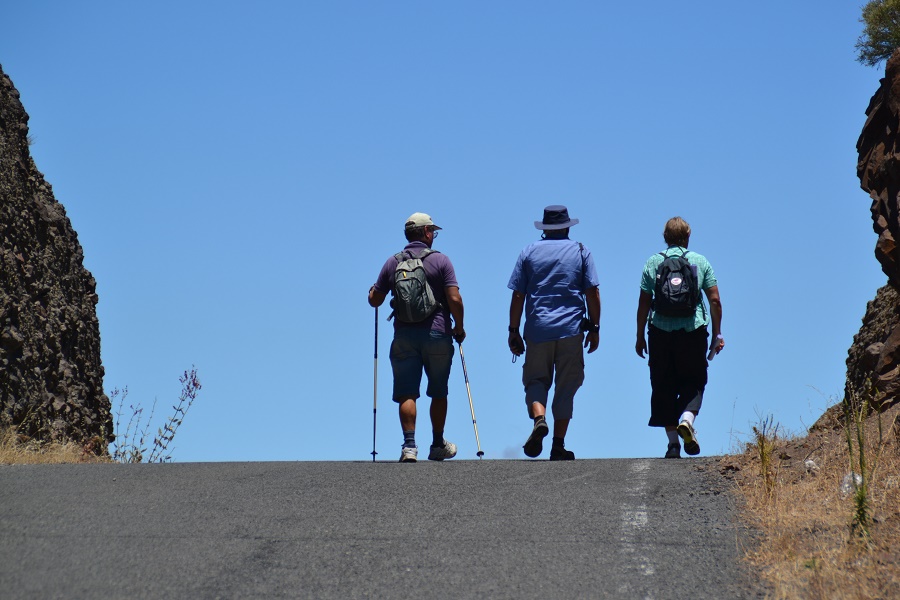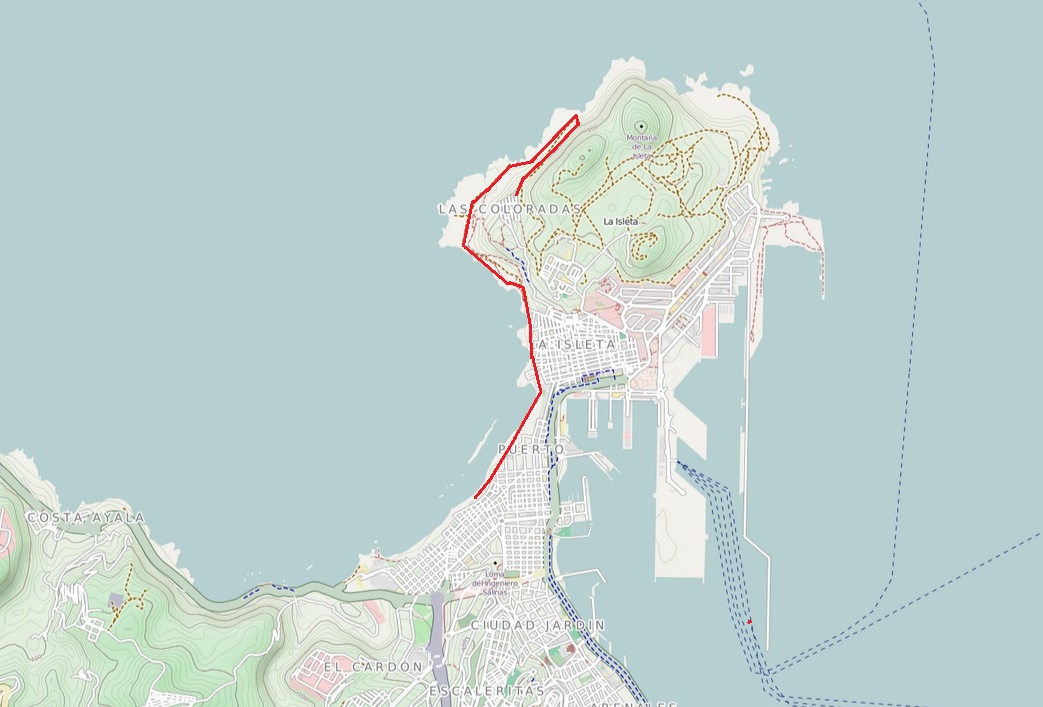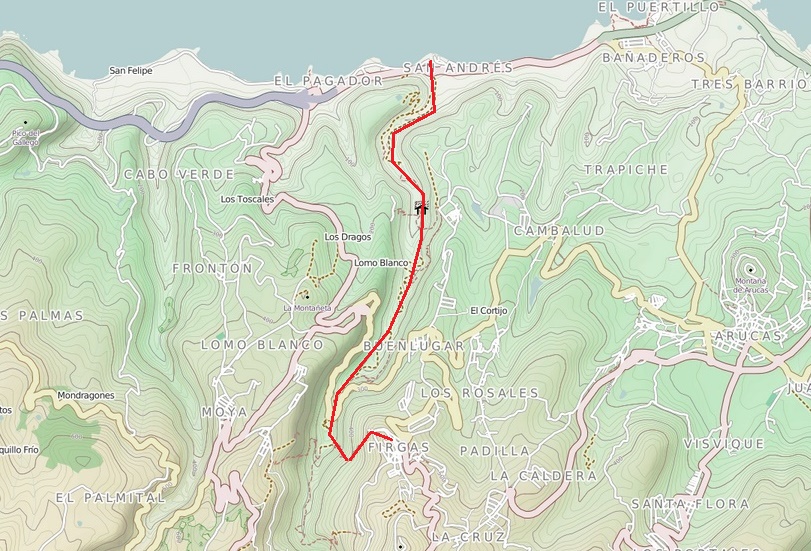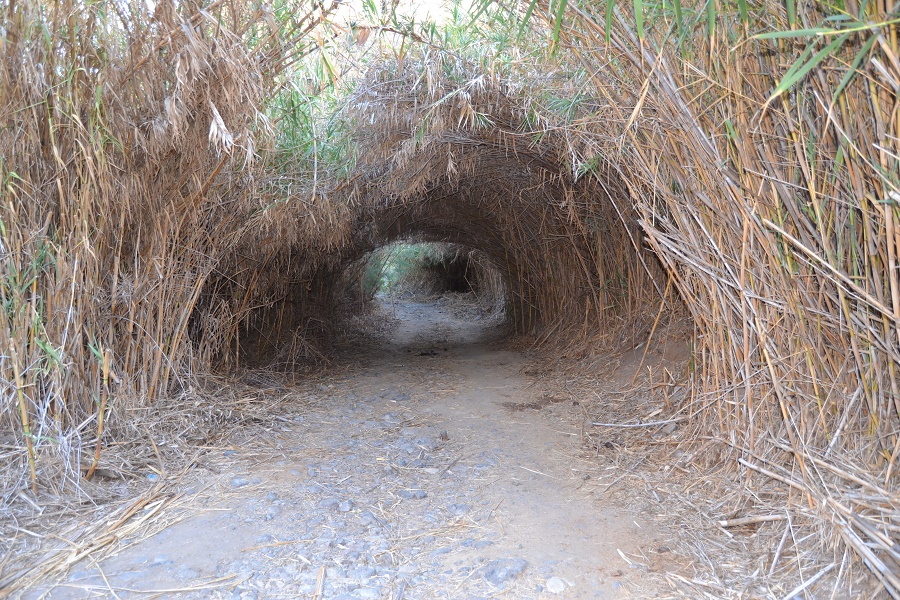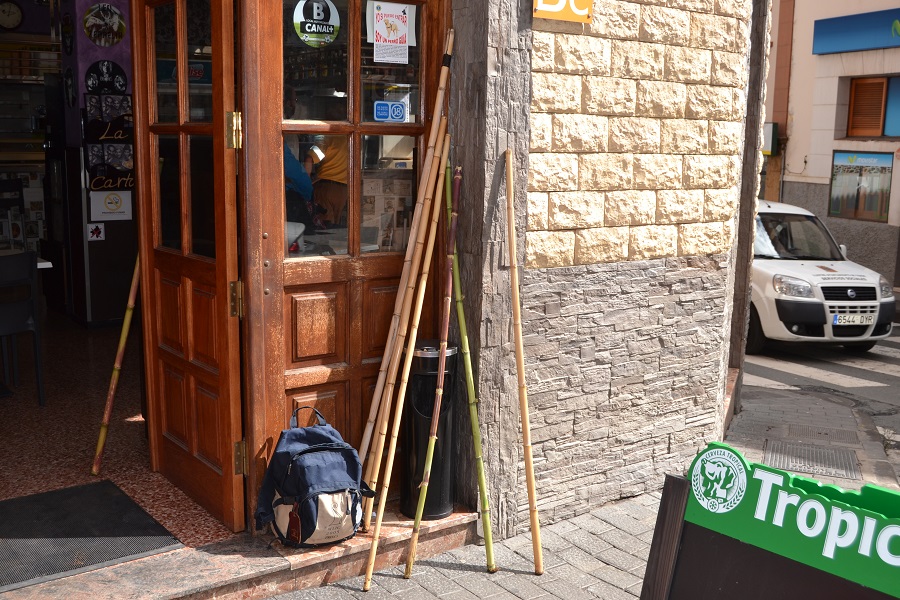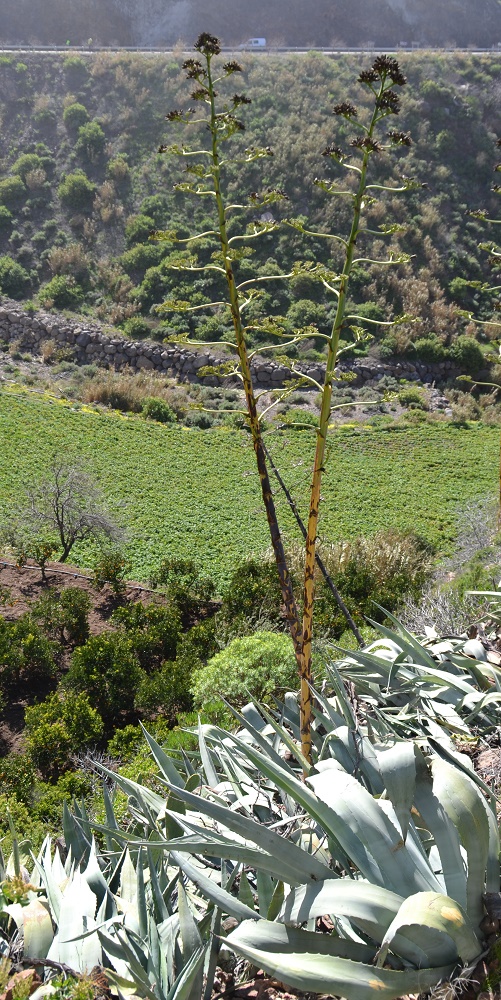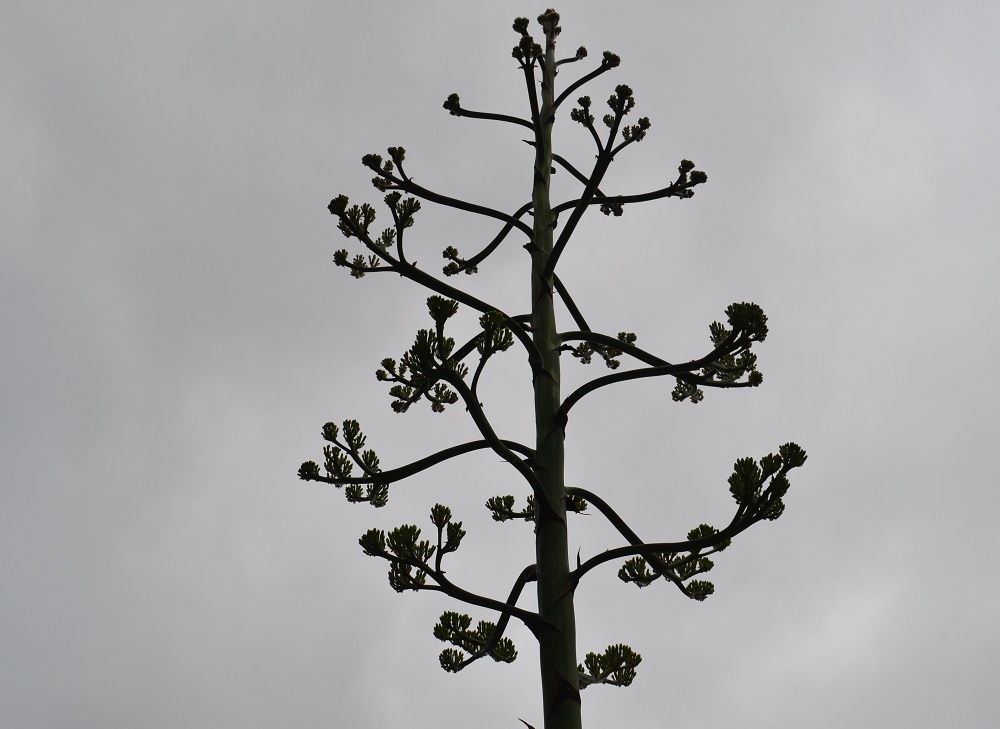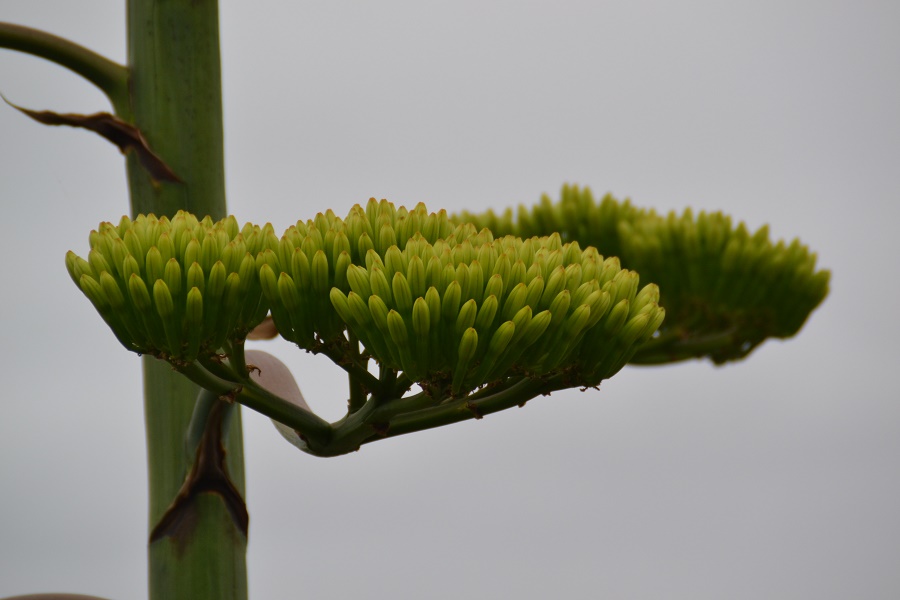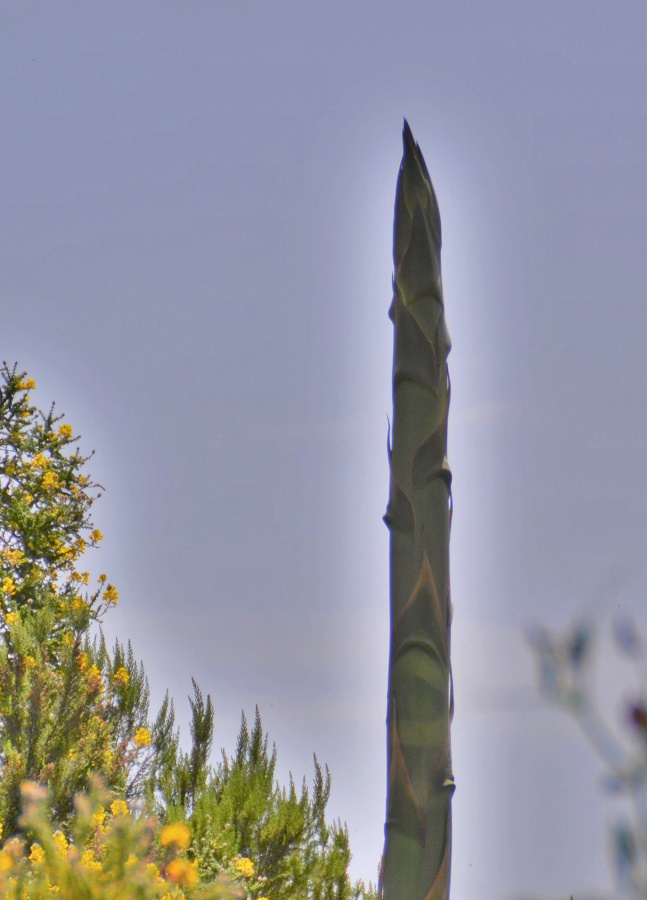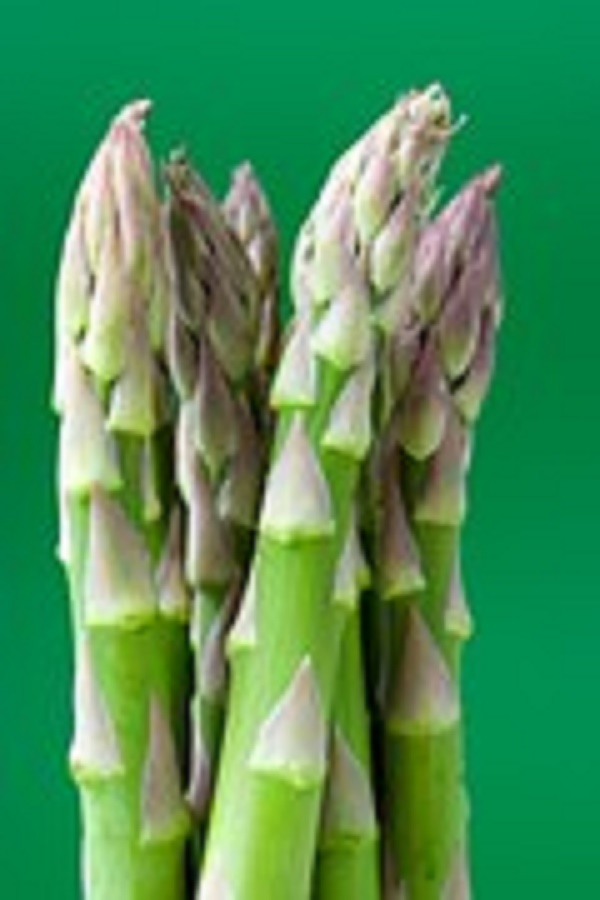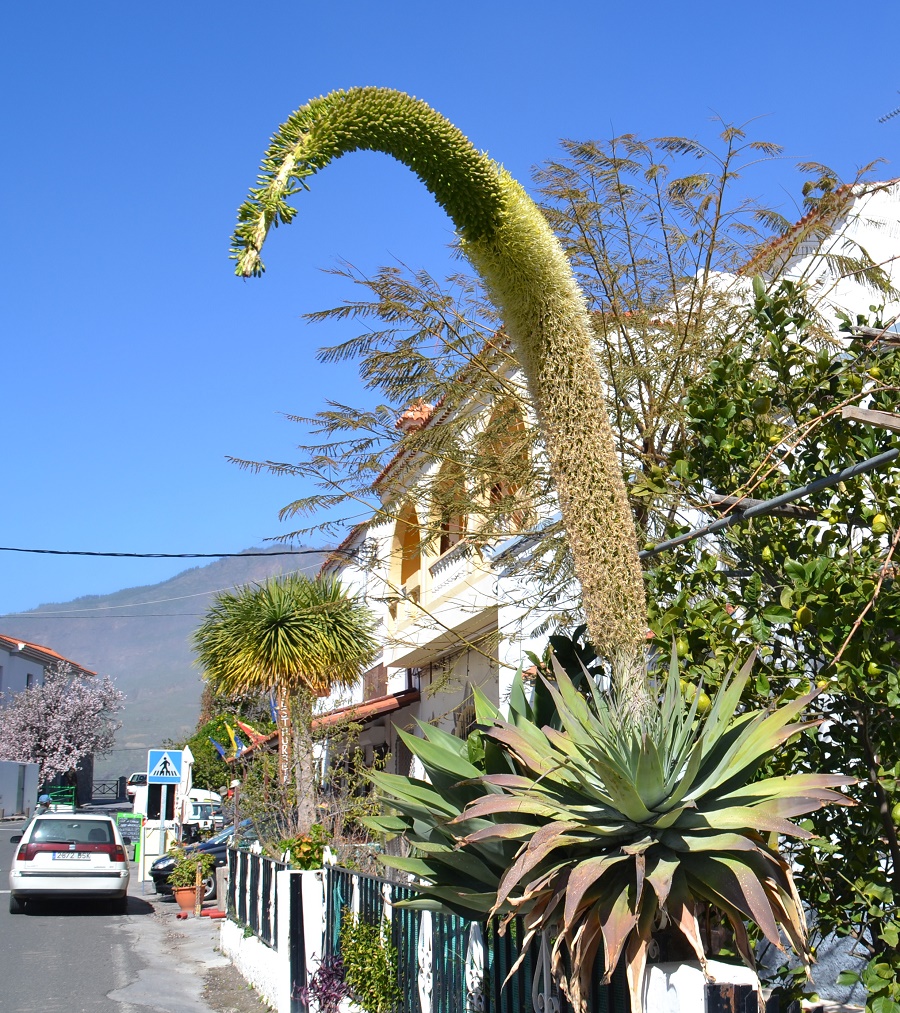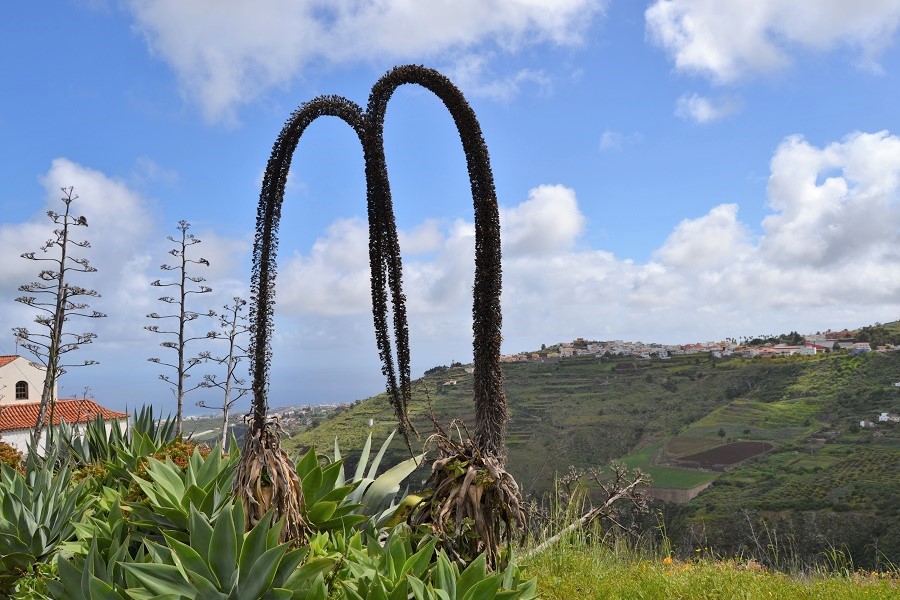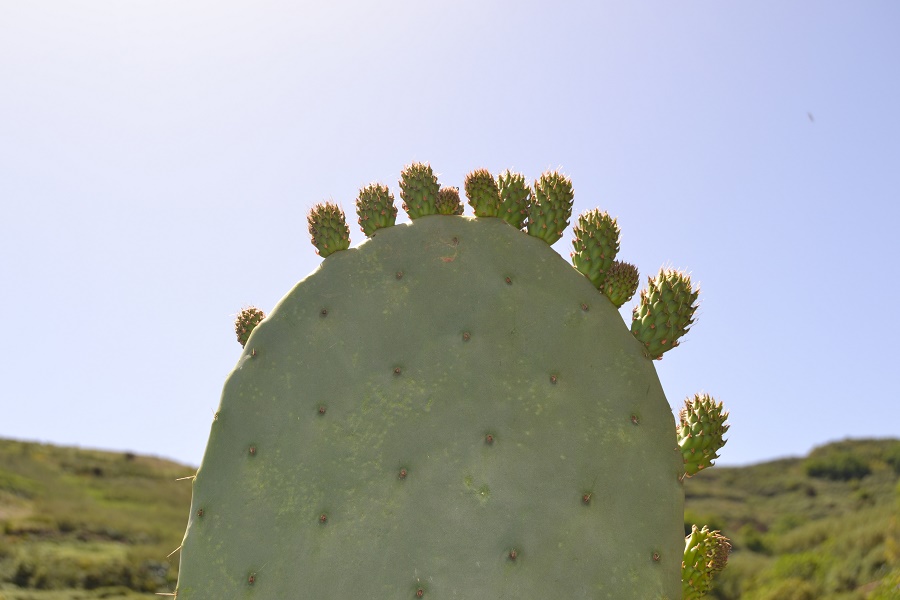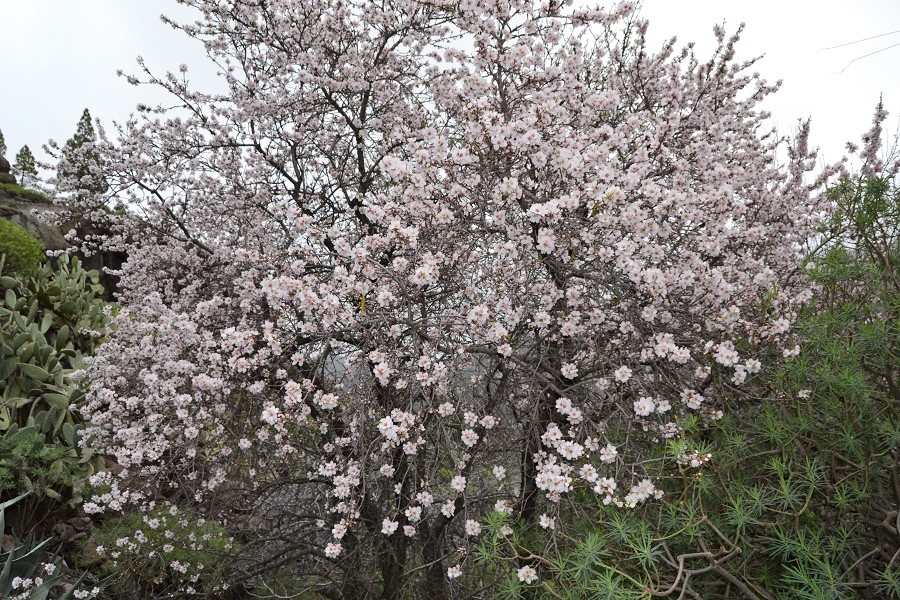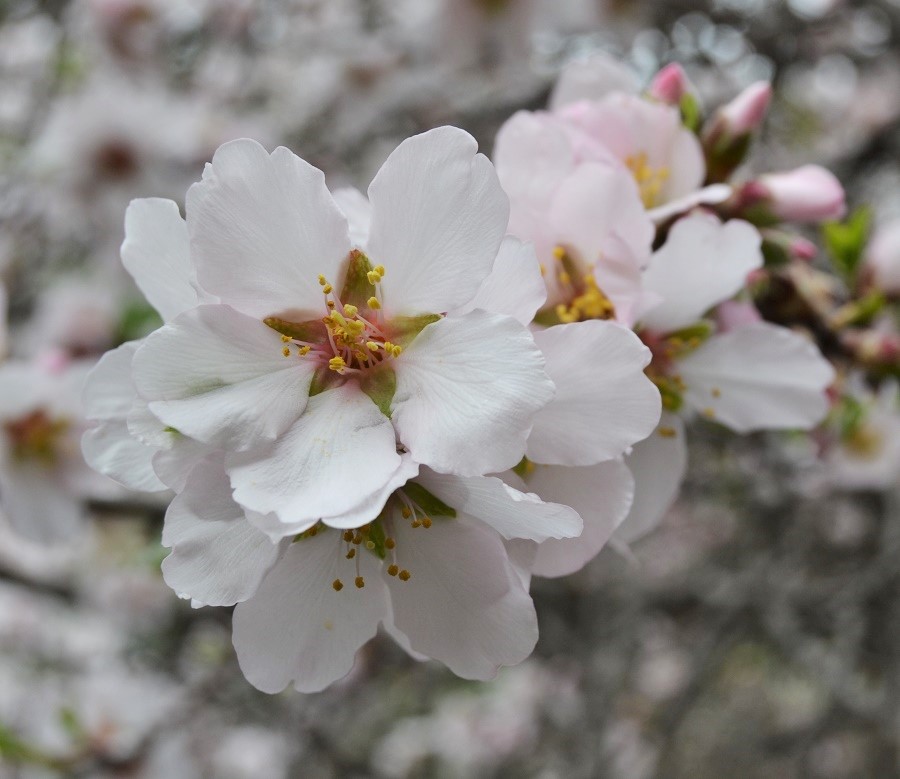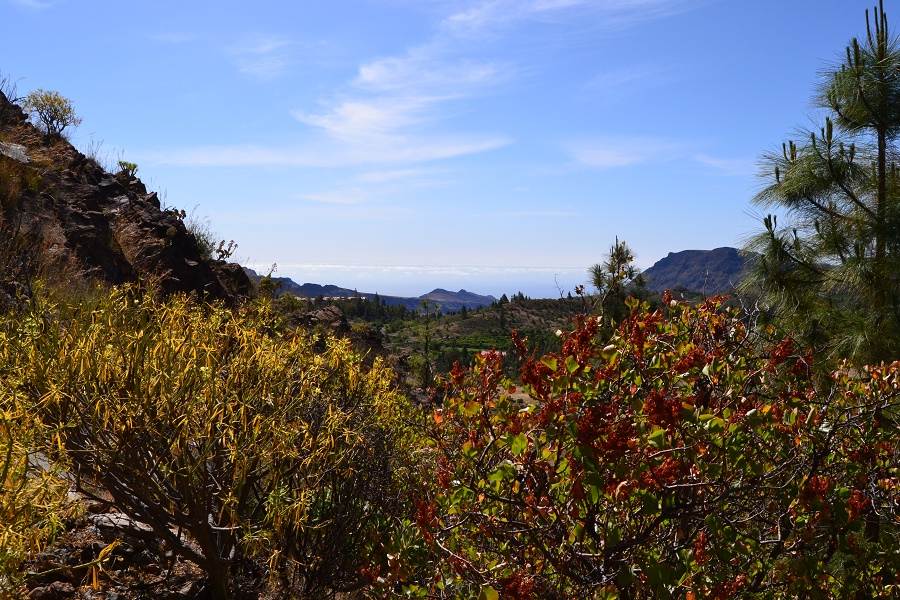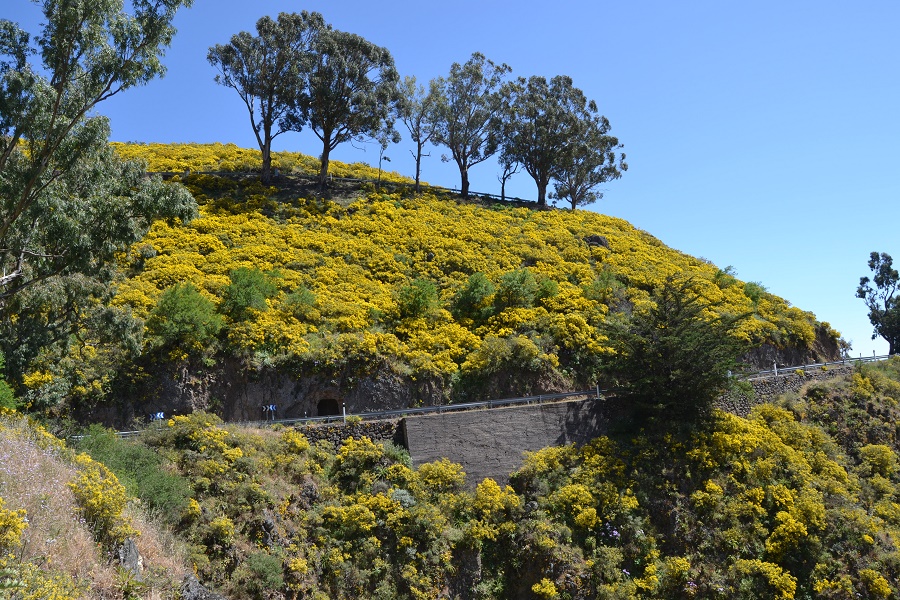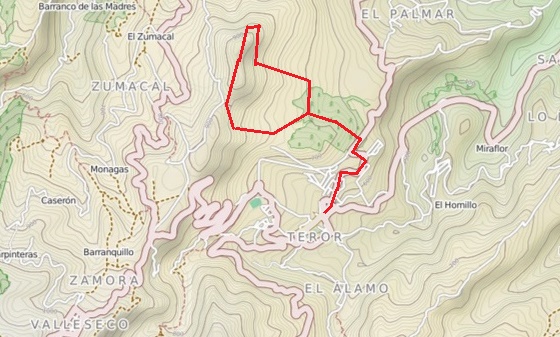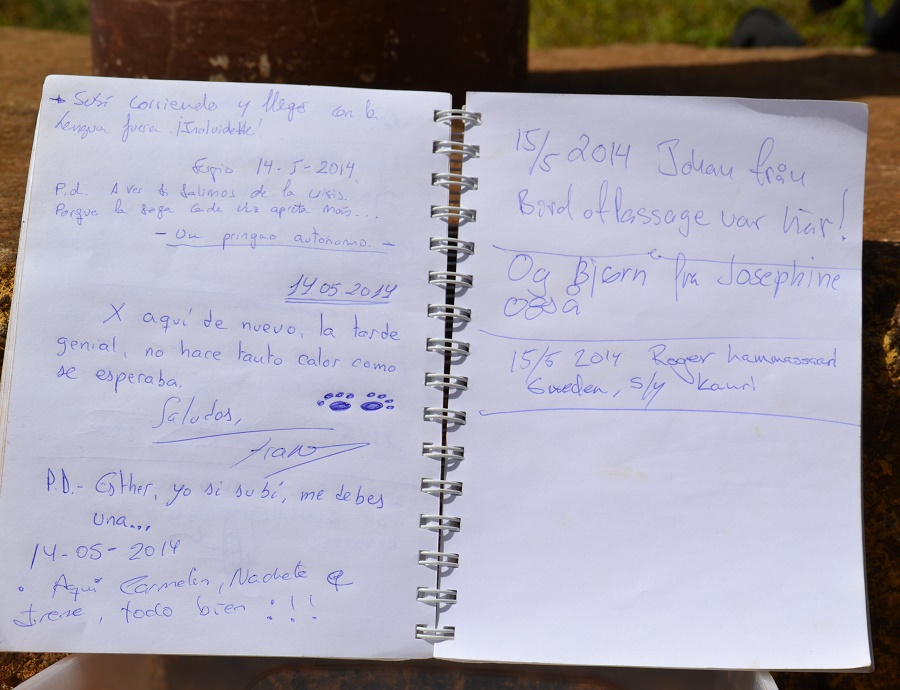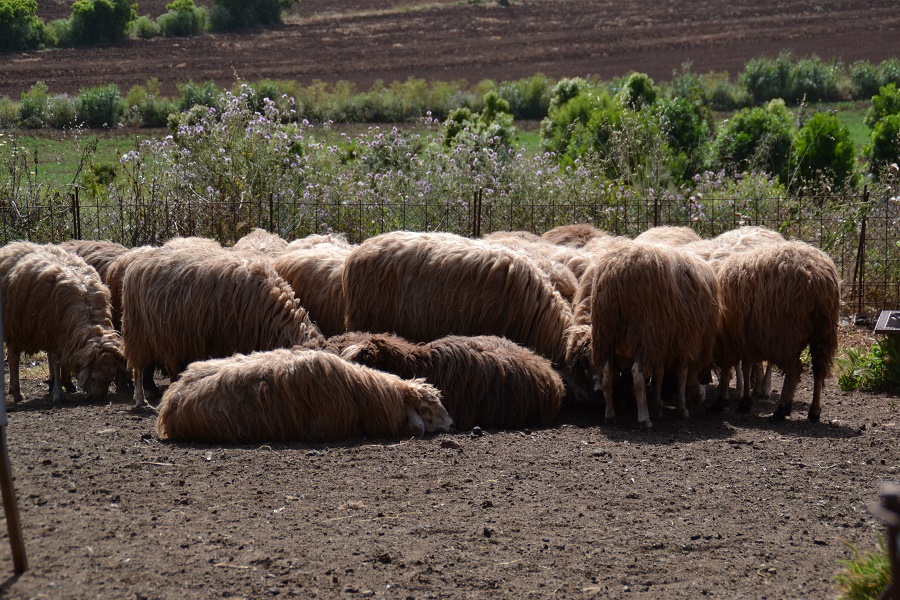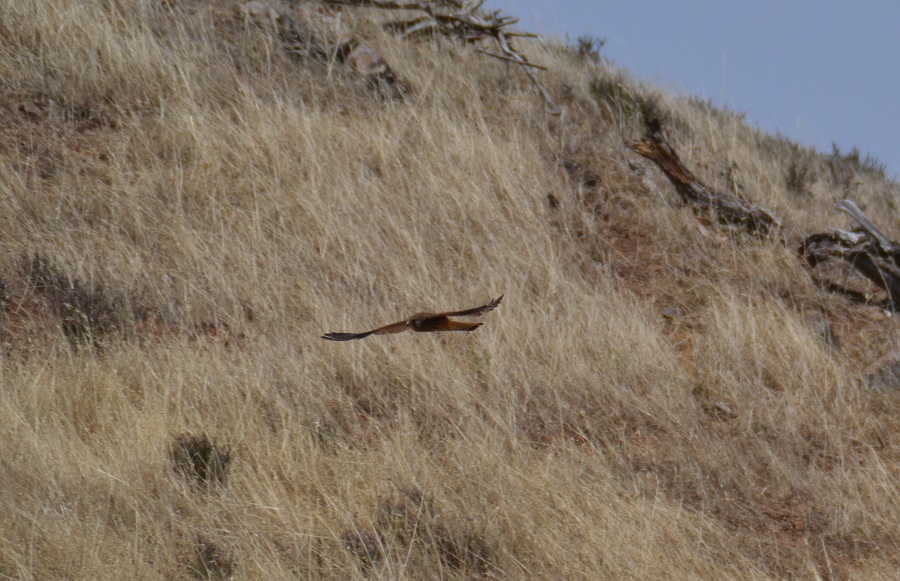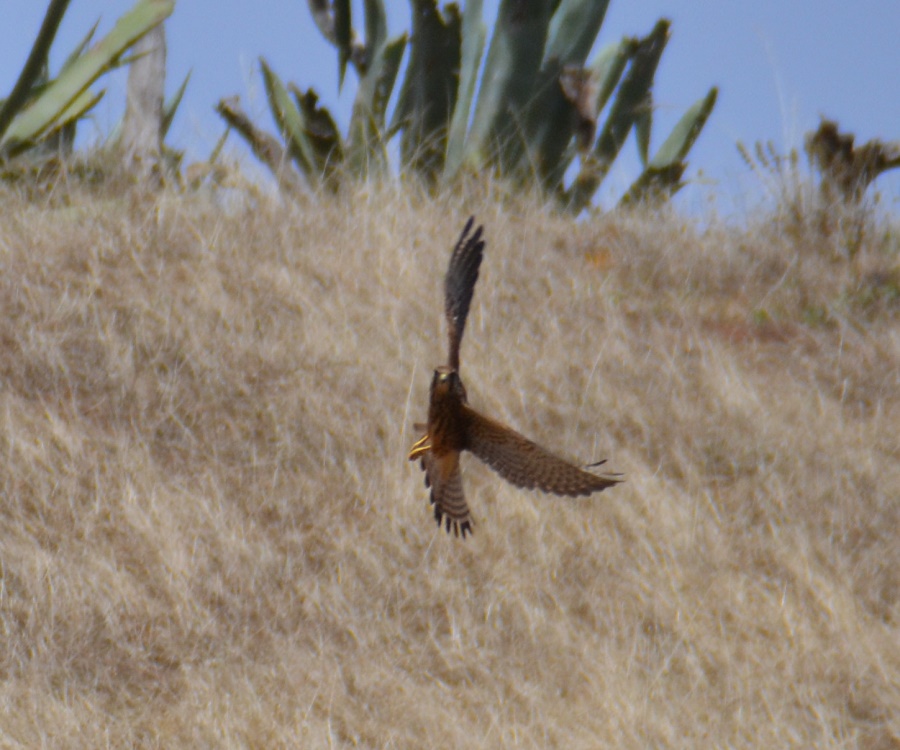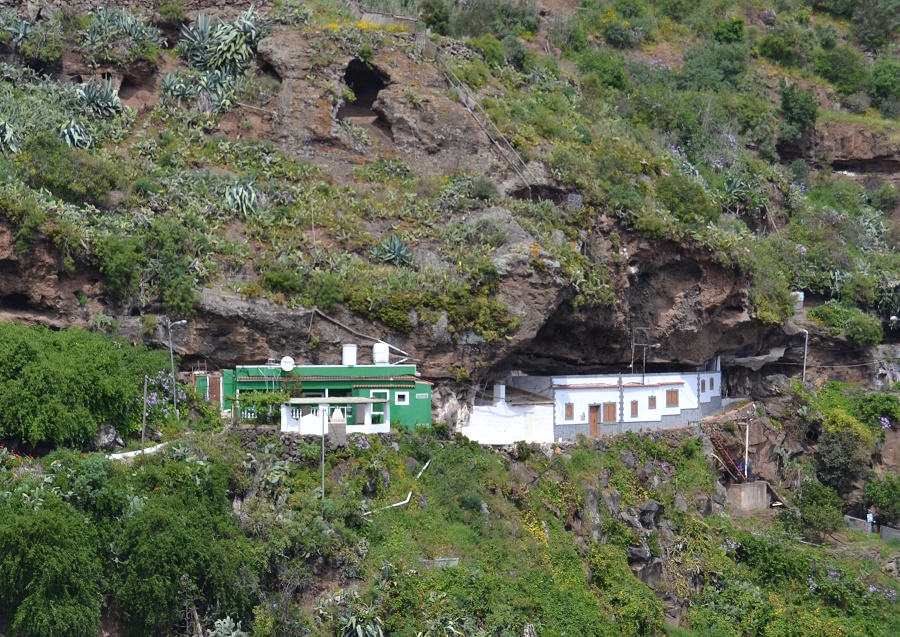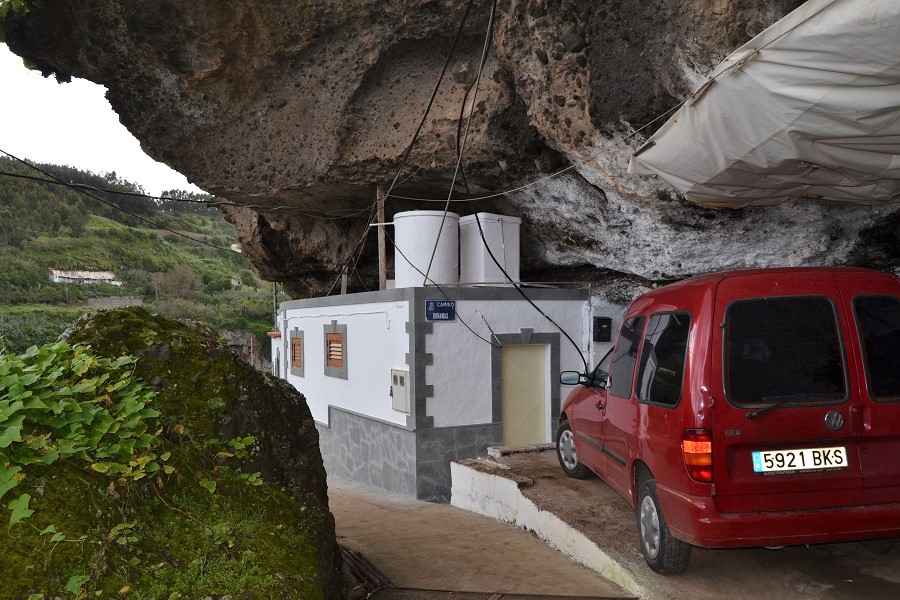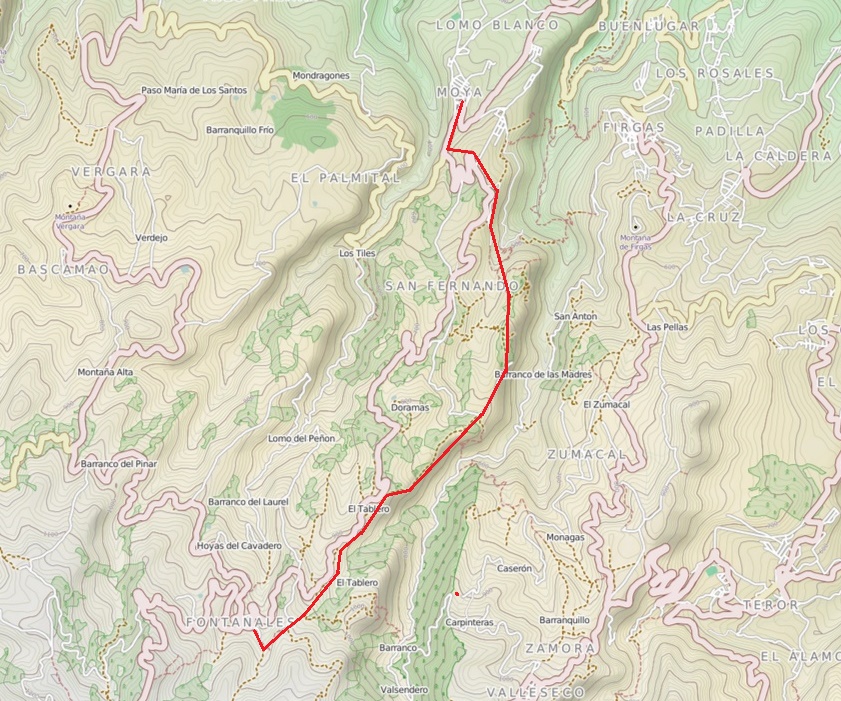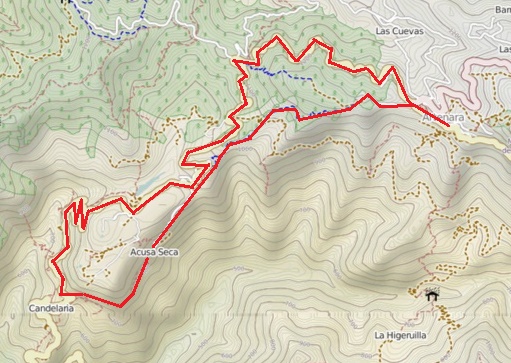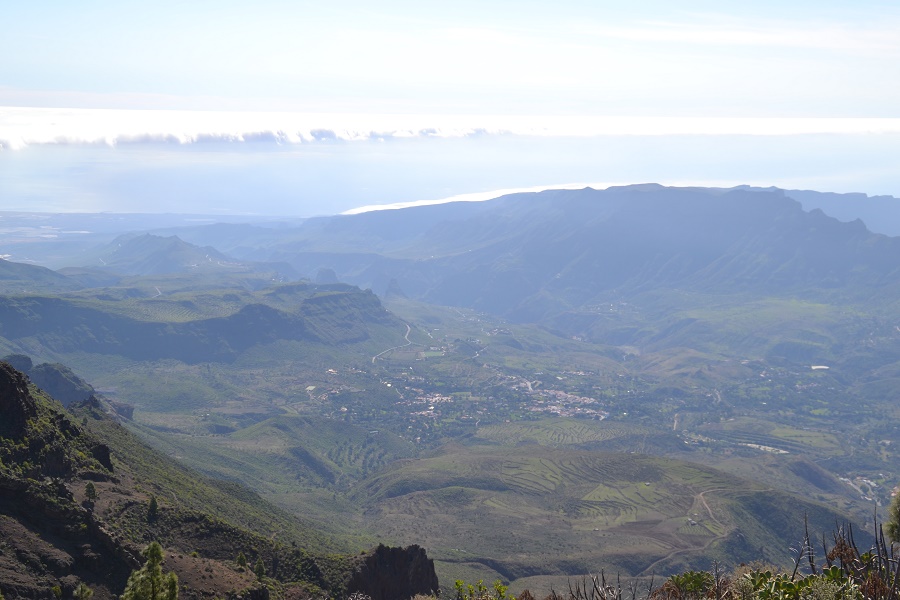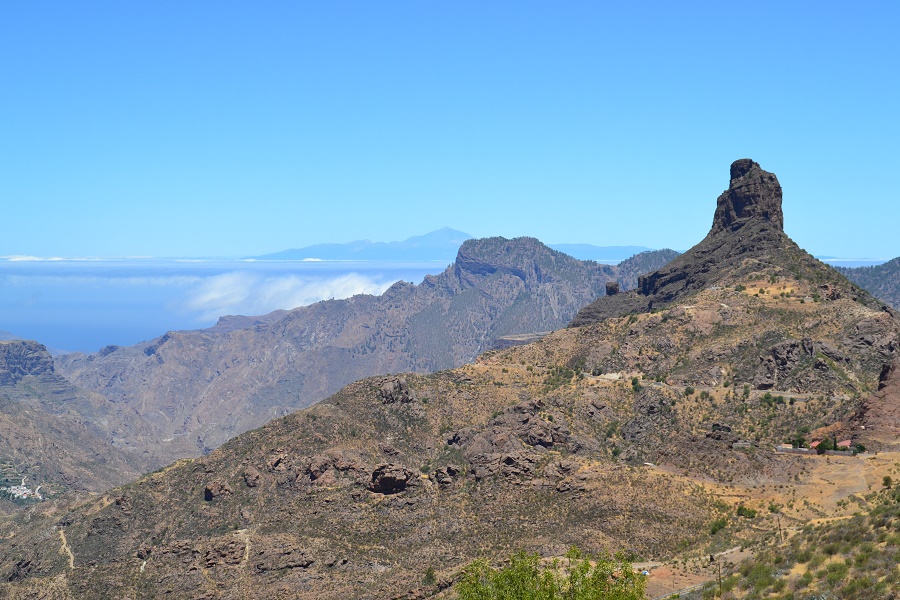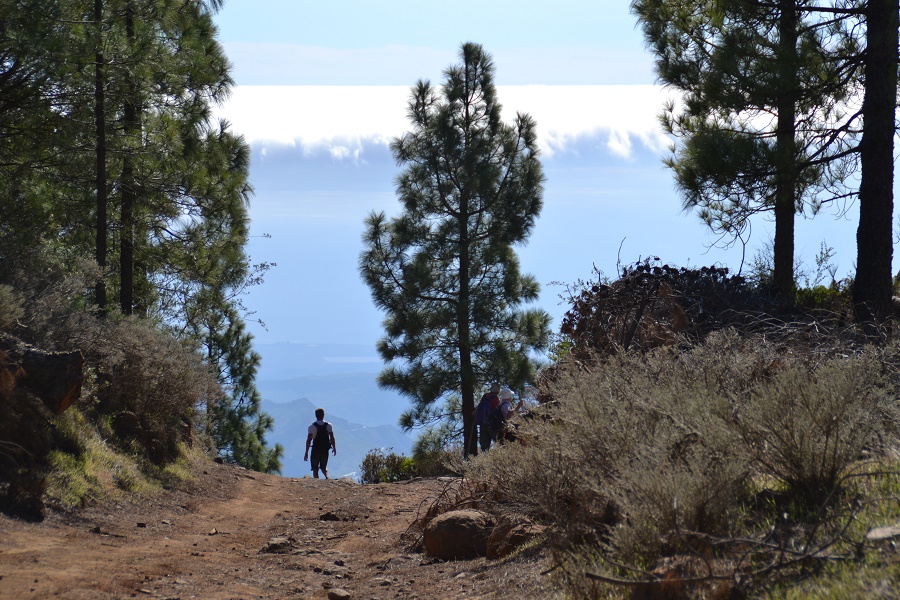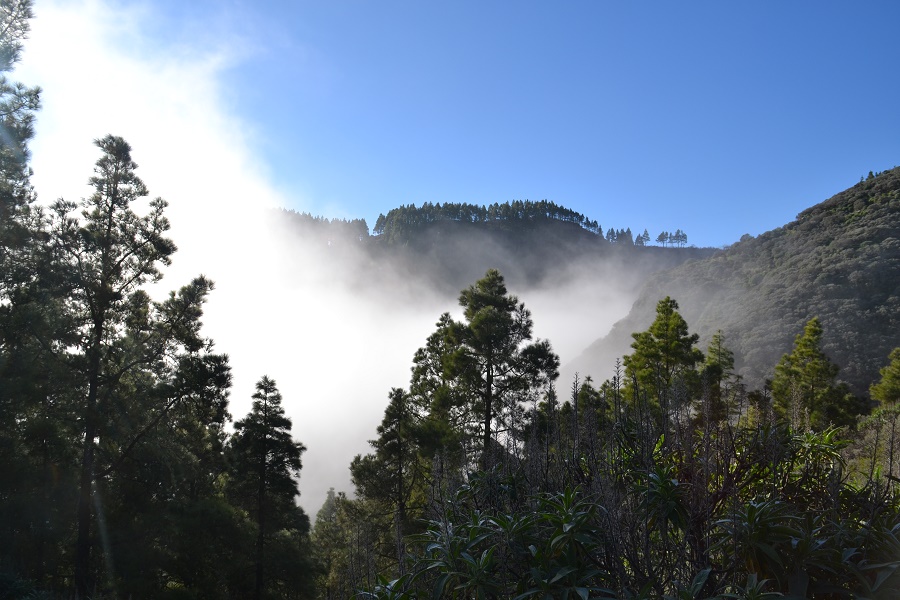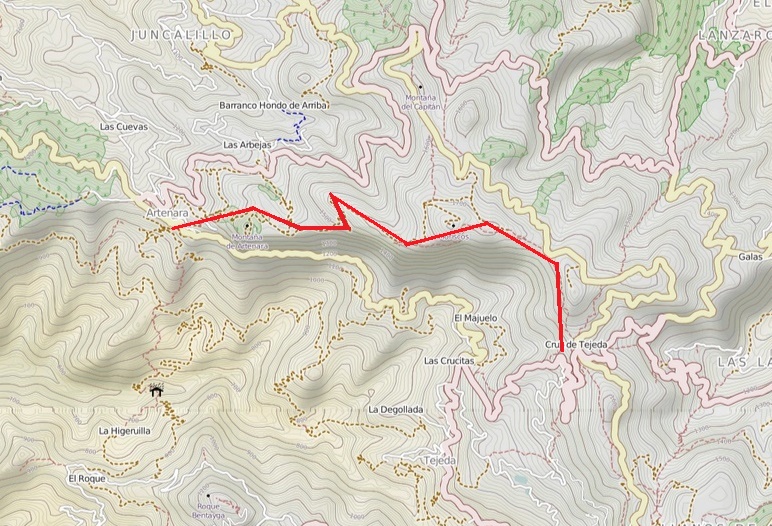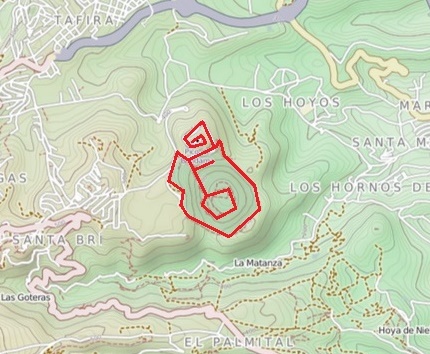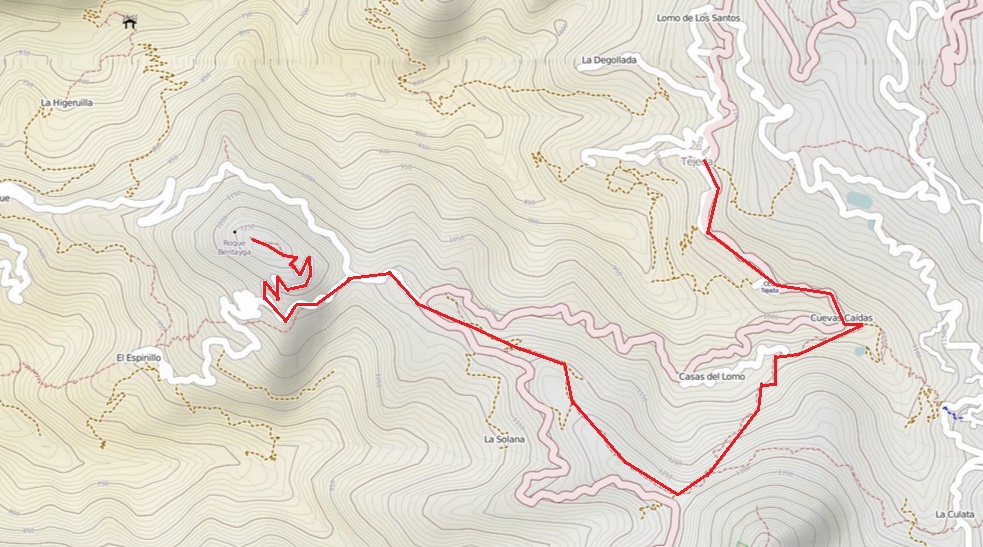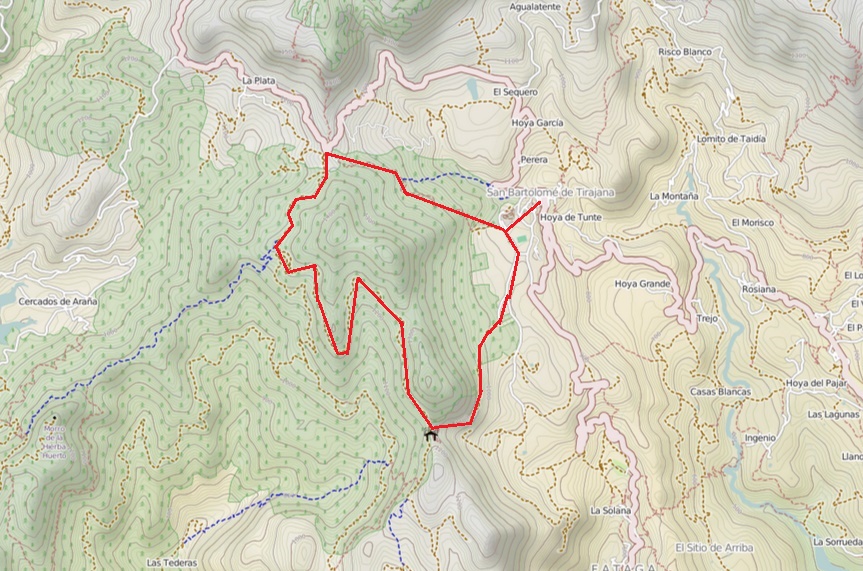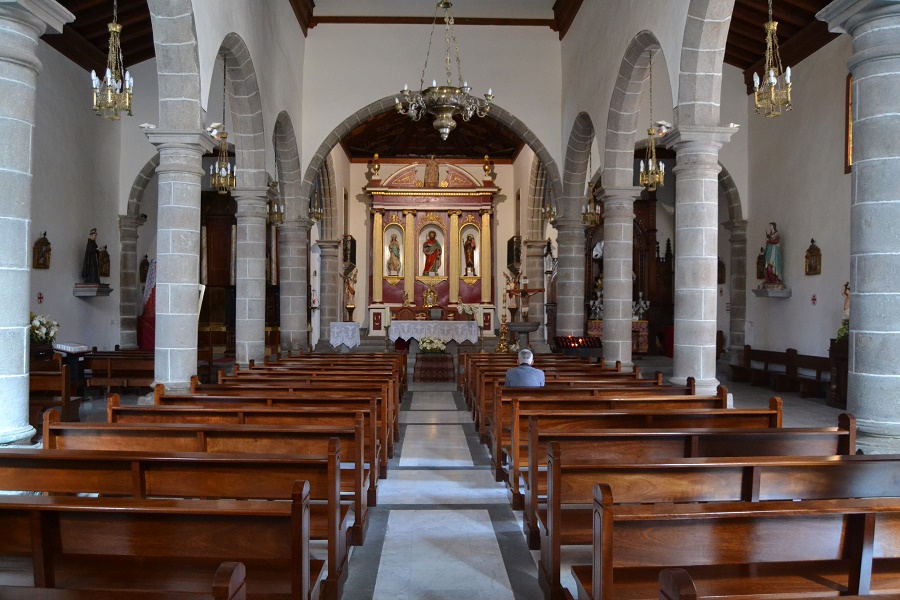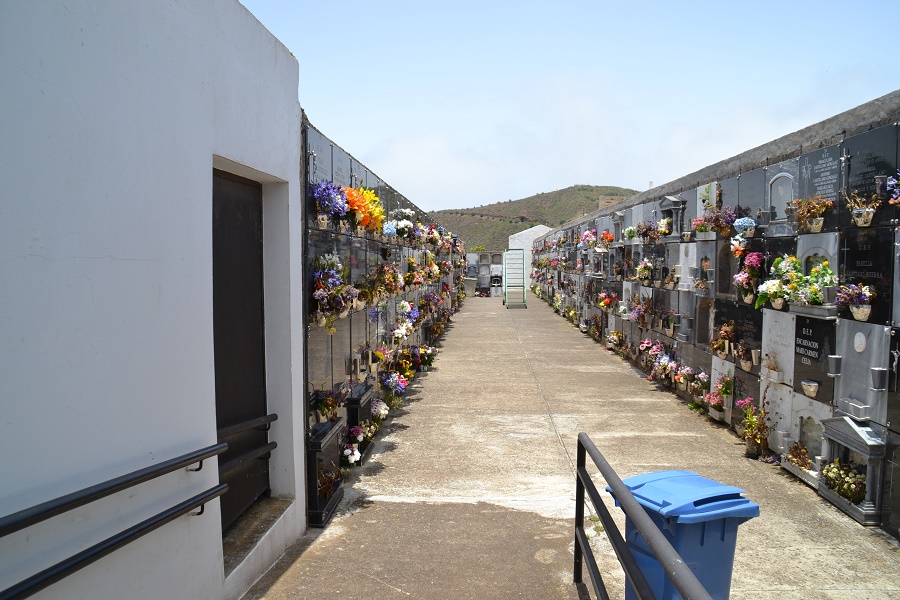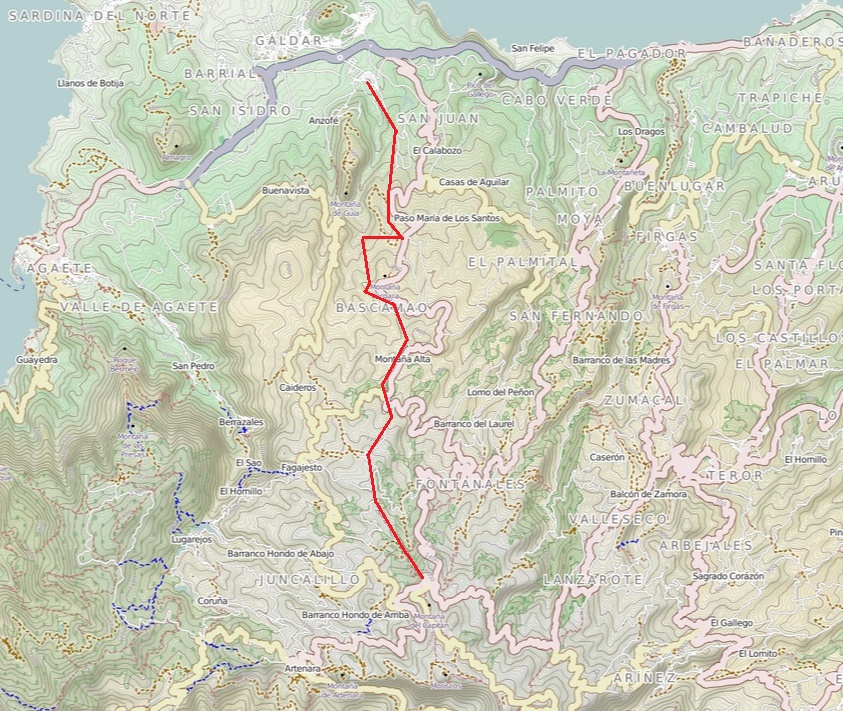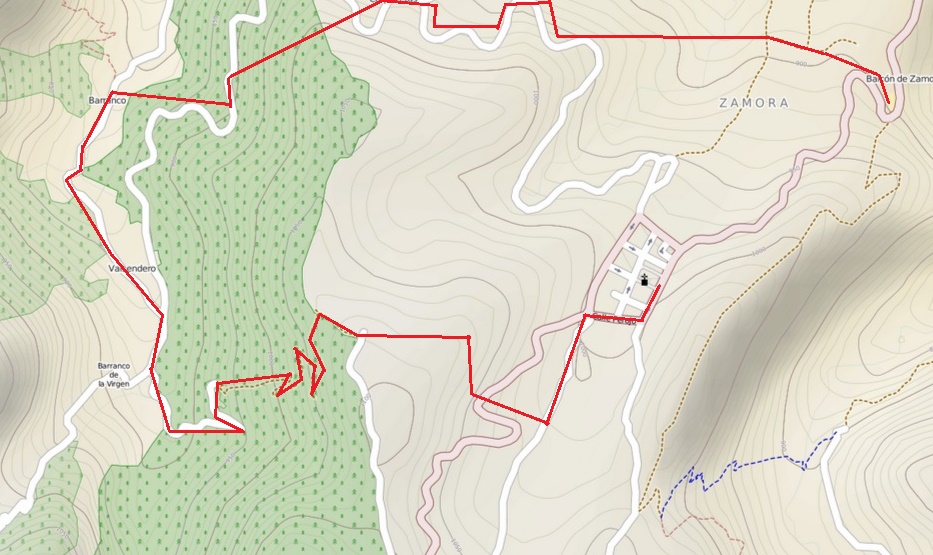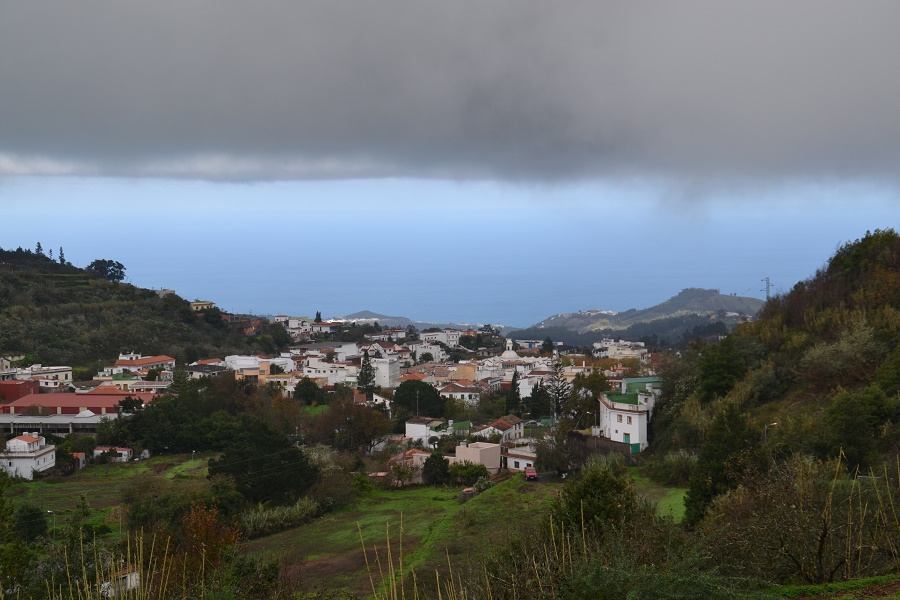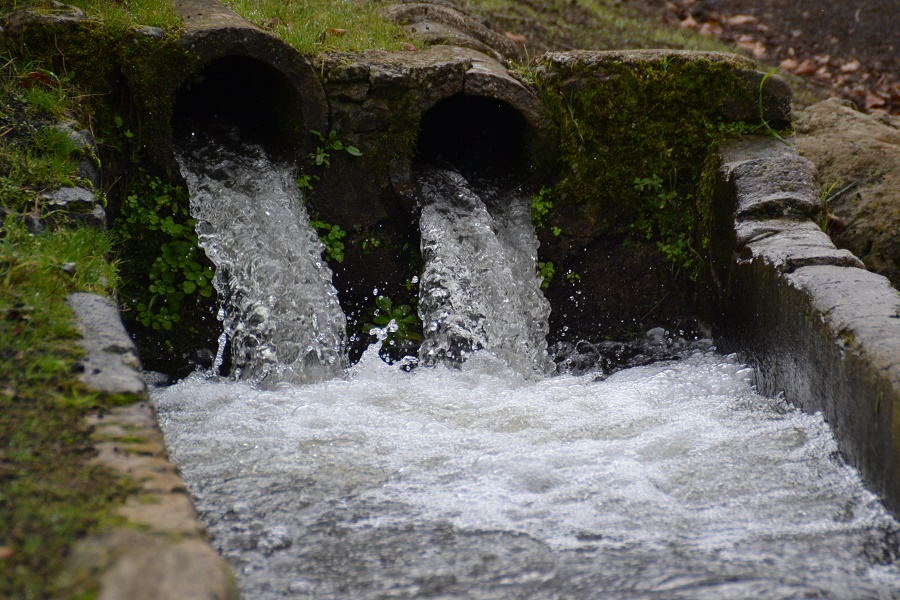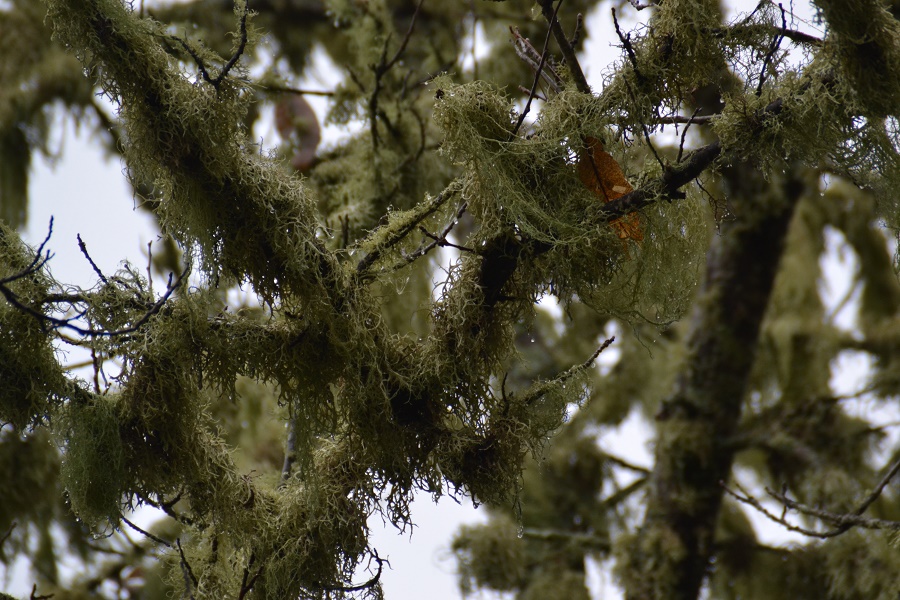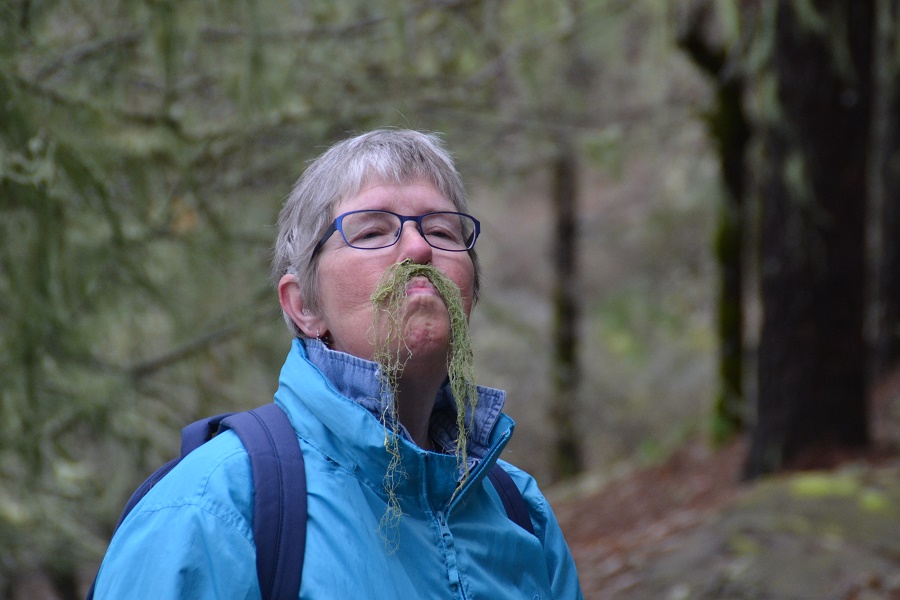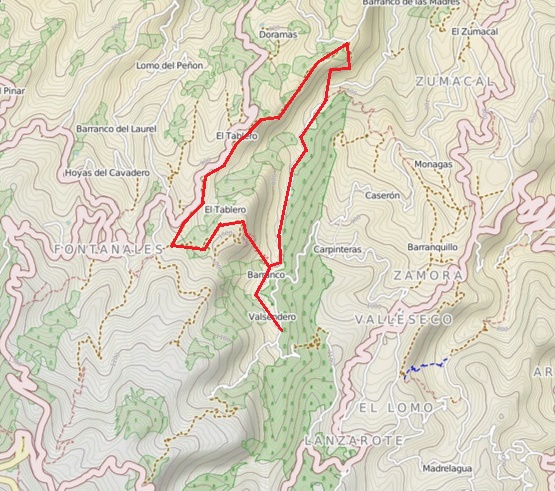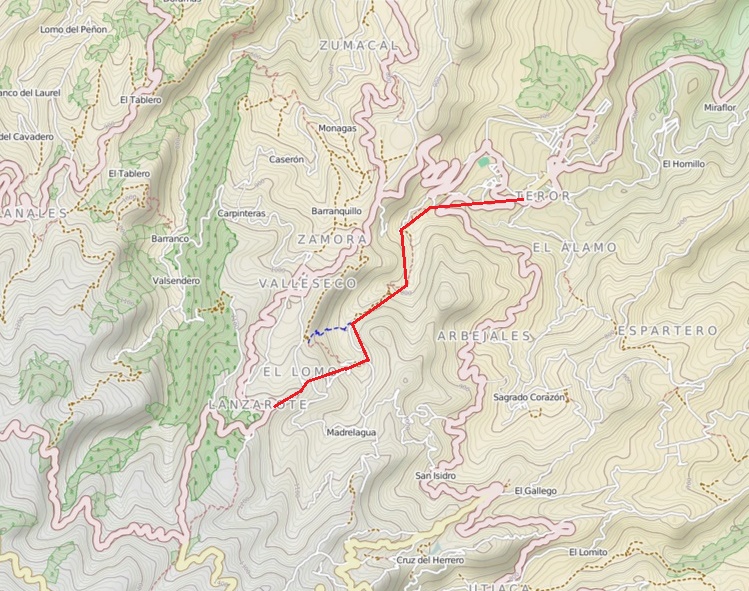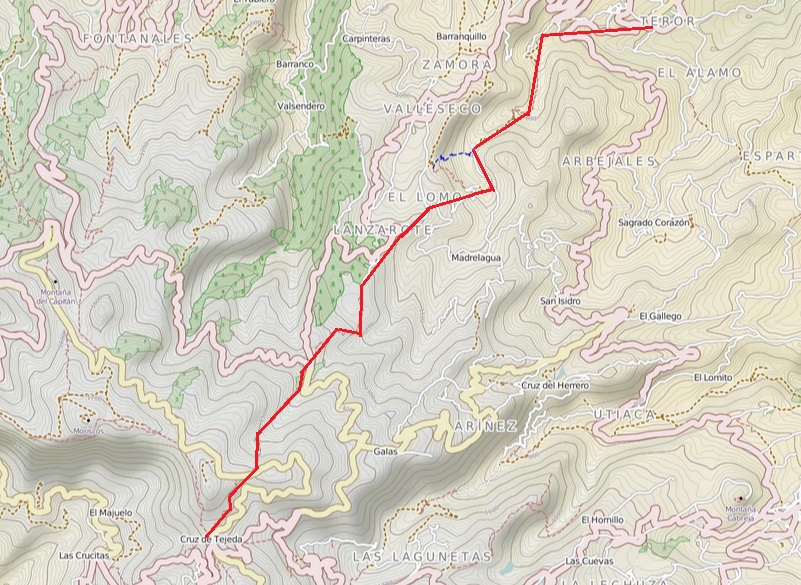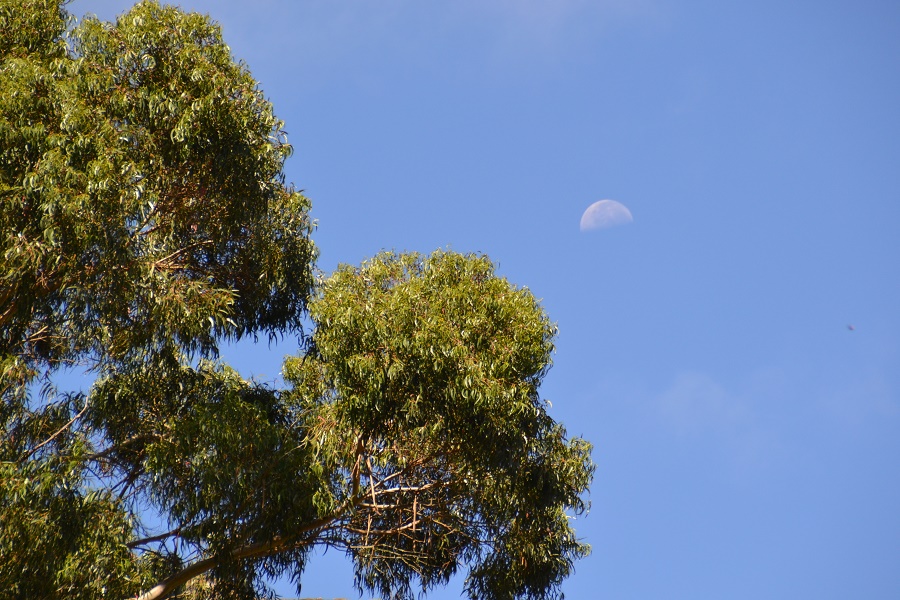
 1. Mountain hiking 2014
1. Mountain hiking 2014


by Johan Kjellander 2014
Mountain hiking is a popular activity in the Swedish sailing community of Las Palmas. Since many years, hikes have been arranged regularly on a voluntary basis by sailors who know their way in the mountains. During 2014 hikes were arranged more or less every week and I joined them as often as I could. I even lead some of them when none of the usual leaders were available. You start early in the morning with a quick walk to fetch a bus up into the mountains where the hike starts. We usually walk around 5 to 15 km but there are shorter hikes as well as longer. The tour normally ends close to a bus stop and we then go back to Las Palmas in the after noon.
Information about hikes used to be spread informally from mouth to mouth but in 2013 we created a group on Facebook (Långseglare på Kanarieöarna) that is now used to announce next weeks hike. The Facebook group is also used to publish pictures from hikes and a long range of other useful stuff. By the end of 2014 the group had more than 100 members and another 100 pending to join.
Isleta.
A quick and easy hike is the one from the little village Las Coloradas on Isleta, along the north west shore and back to the beach of Las Canteras in the centre of Las Palmas. Isleta was once an island separated from Las Palmas but is now more or less a part of the city. If you take a city bus up to Las Coloradas you can make this walk in only a couple of hours.
San Andres to Firgas.
Another hike, relatively short and close to Las Palmas, is the one from the small village of San Andres on the north coast to the city of Firgas, known for it's good water which is sold in bottles everywhere on the island. On your way up to Firgas you have to pass a number of tunnels through the bamboo-like grass that grows here. This grass, by the way, is an excellent material for walking sticks.
Before we take the bus back to Las Palmas there is usually time for a drink on one of the local bars. You can see from the walking sticks that there are mountain hikers in the bar.
On most hikes you will see a lot of different plants and one of the most typical is the Agave. There are many sorts, the one above I think is Agave Americana. It's juice can be used to produce Tequila and other alcoholic drinks. It lives for about 30 years and then blooms once before it dies.
The flowers of the Agave Americana stretch out from a single trunk that shoots high up in the air.
Young Agave and ordinary Asparagus © Public Domain / PixBay.
It is interesting to note that the trunk that shoots up from the Agave Americana is very similar in shape to ordinary Asparagus, only much much bigger. According to Wikipedia they both belong to the same family of plants !
I think this is Agave Attenuata also called "Foxtail". It has a fantastic fruit that first shoots high up but then bends back down again. Two of them together can make you think about a well known American fast food chain specialized on hamburgers....
The Agave may look like a cactus, but it is not. This Opuntia however, with the typical fruits emanating along the edge of the big flat body, is a real cactus. Some of the Opuntias have fruits that can be eaten or squeezed to juice. (Prickly pear or Tuna in Spanish).
Almond blossom in February.
The Almond (Sv. Mandel) blooms in January/February. The flowers are white or purple. Some people say that one is the ordinary sweet Almond and the other is the bitter one but I'm not sure this is true. I have noticed however that the locals in the mountains sometimes place a stone somewhere near the base of a branch on a young tree to indicate it is bitter. After a few years the branch grows and captures the stone so it stays there forever as a warning.
In April, Broom blossom (Sv. Ginst) turns the hills yellow.
The Canarian flora is one thing I will never forget. There are so many beautiful species and there is always something you can see, all year around. If you want to see more of the Canarian flora, click here for my collection of 101 plants and flowers that I have photographed during various hikes.
Teror to Pico Osorio.
The canarians seem to be well aware of their fantastic nature and take well care of it. Many of the hikes go through beautiful nature reserves. One is the hike up to Pico Osorio in the park of Doramas. It starts at the old Finca Osorio farm, once owned by one of the most noble families in Spain but now a nature reserve and museum run by the city of Teror.
The hike leads to the peak around 300 meters high and up there is a small monument and sometimes also a book that you can sign to prove you have been there.
Down at the farmhouse you can visit the beautiful gardens and tree plantations. There are also animals.
Peregrine hunting.
Compared to the woods of northern Scandinavia the fauna is not impressing. The largest wild mammal seems to be the rabbit. There are no snakes but plenty of lizzards and also some birds including predators like the Peregrine (Pilgrimsfalk).
The native Canarian Guanche population used caves for living and storage before the Europeans arrived. The mountains are full of smaller and larger caves not in use any more. In some places caves are still used for living but with modern standard of course.
Hikes from Moya to Fontanales and Teror to Acusa Seca
You can find nice cave houses in Doramas on the hike from Moya to Fontanales. In Acusa Seca there is a complete village of cave houses and close by there are many abandoned caves that you can visit.
Many hikes are on high altitudes and the views are fantastic. In clear weather you can easily see mount Teide on Tenerife some 100 kilometers to the west. Two peaks that many hikers visit are Roque Nublo and Roque Bentayga.
Artenara to Cruz de Tejeda and the Bandama crater circle.
Tejeda to Roque Bentayga and San Bartolome circle.
The four hikes above all offer fantastic views over the landscape.
Pinos Galdar to Guia and Valleseco to Zamora.
Most villages have their own church and cemetery. Usually very well kept, even high up in the mountains in very small villages. On the two hikes above you will see very nice churches and cemeteries.
The south part of Gran Canaria is much drier than the north part where most of the rain falls. The character of the landscape changes dramatically from place to place. Green forests in the north and desert in the south.
There is more rain during the winter. In places with Pine forest lichen can grow on the trees, just like in Scandinavia. Sometimes it even grows on humans !
The city of Teror is a good starting point for many hikes in the north. Here are some of them.
Flora and fauna. Caves, beautiful villages high up in the mountains with fantastic views. Clouds, rain and water or desert. Gran Canaria has a lot to offer to hikers. Even the moon is different from home !
